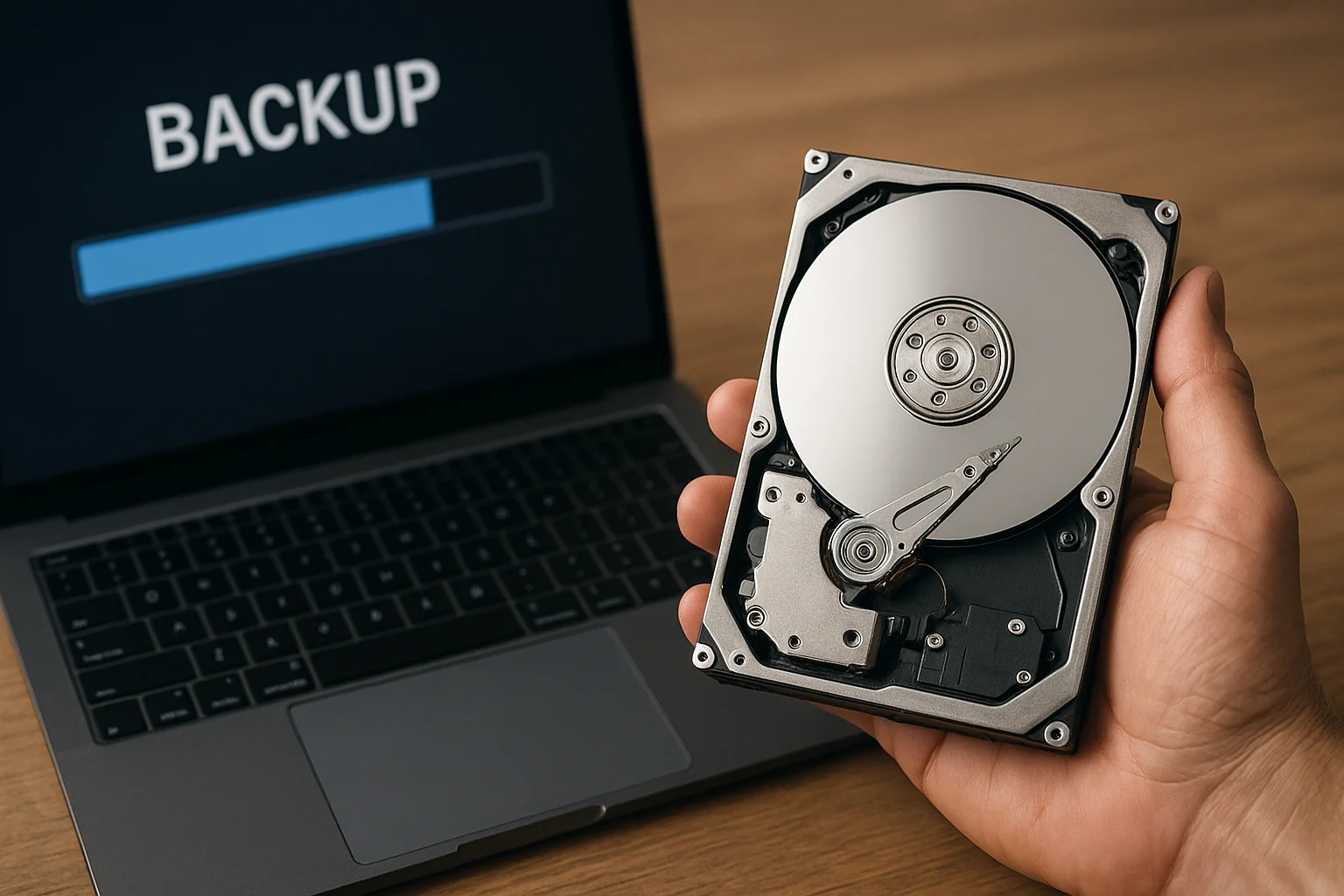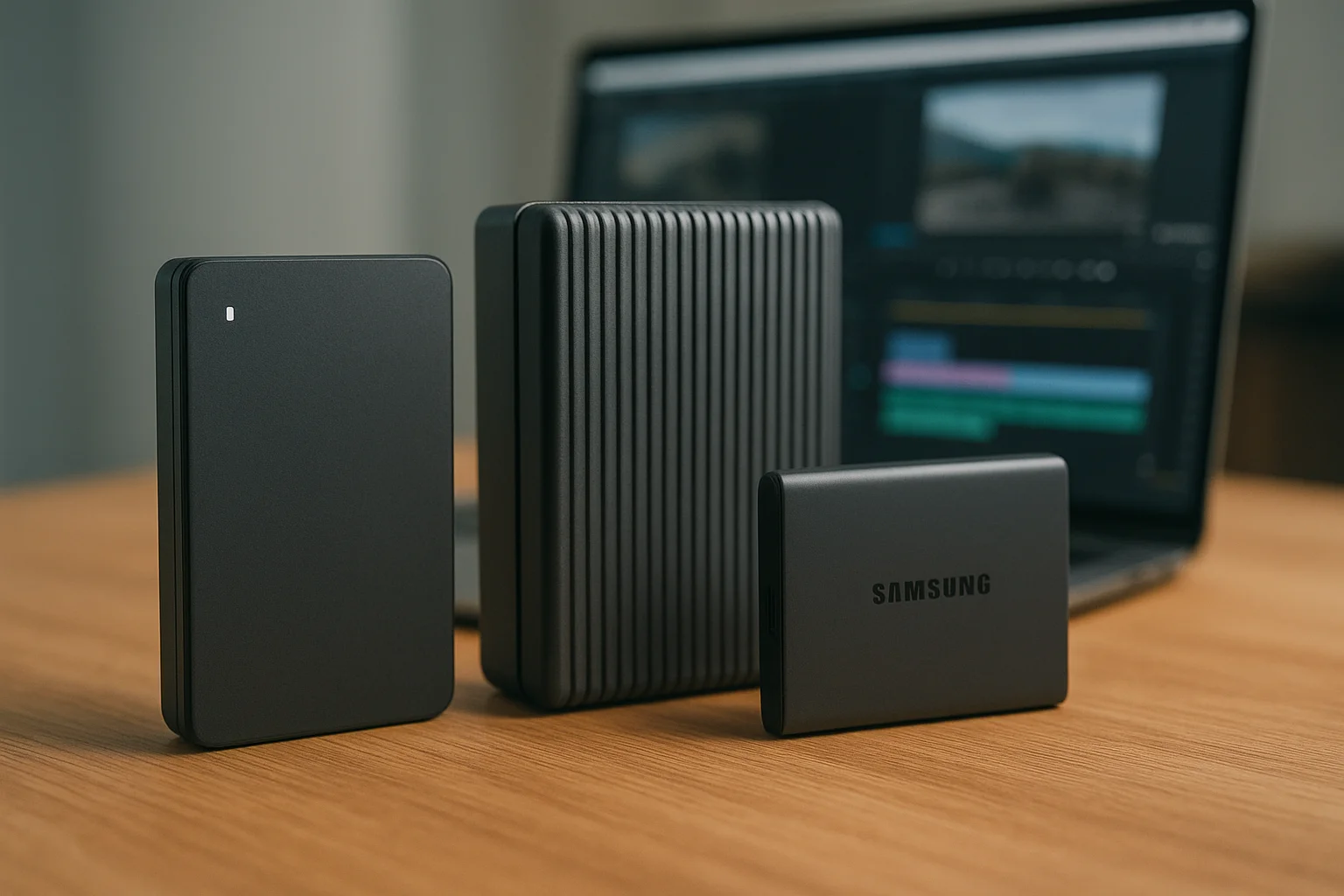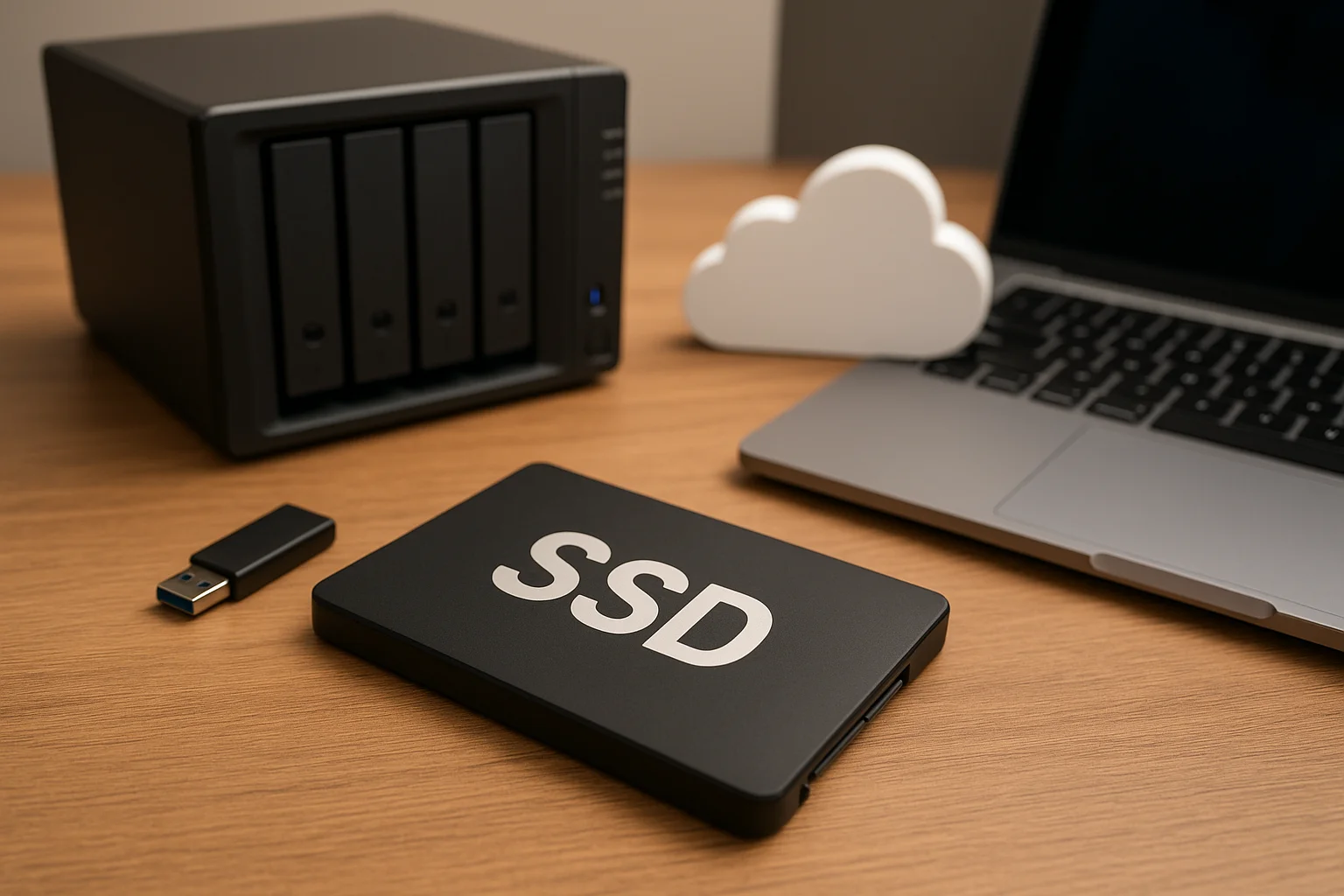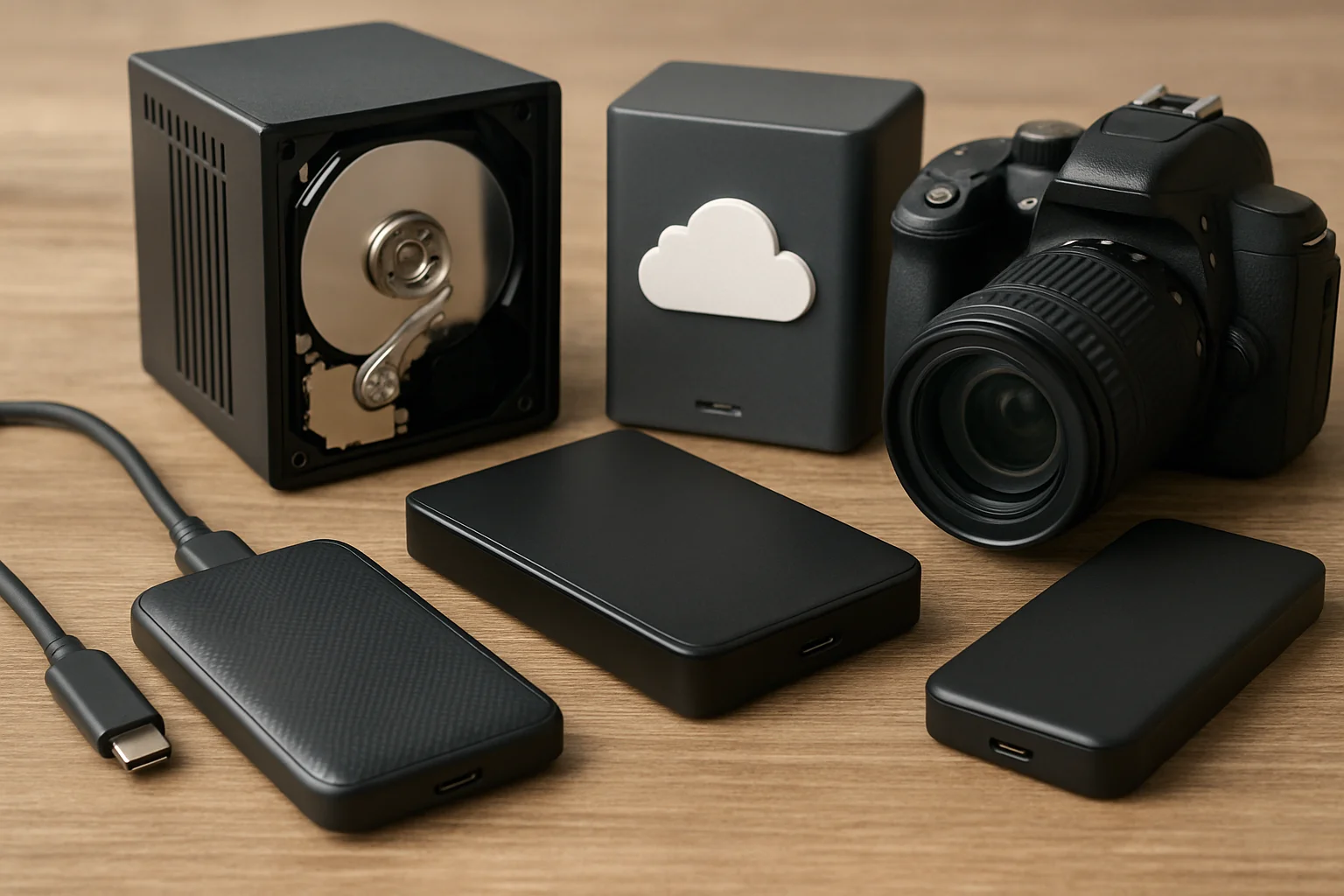What Is CMR (Conventional Magnetic Recording)?
CMR, short for Conventional Magnetic Recording, is the traditional technology used in hard disk drives to store data. In this method, each track on the platter is written side by side, without overlapping, which ensures that the drive can write and read information in a stable and predictable way.
Because the tracks are written in parallel, data can be updated or rewritten without affecting neighboring tracks. This makes CMR drives particularly well-suited for workloads that require frequent writes, such as backup processes, database management, or applications where files are constantly modified.
From a user perspective, the most noticeable advantage of CMR is its consistent write performance. Unlike other recording methods, there is no need for complex rewriting operations, which means that backup speeds remain stable even with large volumes of data. This reliability is one of the reasons why CMR technology has remained a standard in the storage industry for many years.
In addition to reliability, CMR drives also offer better compatibility with RAID systems and are generally preferred in environments where uninterrupted data access and long-term stability are crucial. For users looking for hard drives that can handle both everyday storage tasks and demanding backup operations, CMR remains a strong and dependable option.
What Is SMR (Shingled Magnetic Recording)?
SMR, or Shingled Magnetic Recording, is a hard drive technology designed to increase storage density by partially overlapping data tracks on the platter. This approach is similar to how shingles are laid on a roof, where each new track slightly covers the previous one. By doing this, manufacturers can fit more data on the same physical disk surface.
While this design makes SMR drives more cost-effective in terms of price per terabyte, it also introduces specific limitations. Because tracks overlap, rewriting data is not as straightforward as in other technologies. When a file is updated, the drive may need to rewrite an entire block of overlapping tracks instead of just the modified portion. This process, known as a write amplification, can significantly slow down write speeds.
For sequential operations, such as archiving large media files or storing data that is rarely modified, SMR drives can perform efficiently. However, in scenarios involving frequent random writes, such as database updates, incremental backups, or RAID environments, SMR technology often struggles to maintain stable performance.
Another aspect to consider is that SMR drives rely heavily on their internal cache management to temporarily store and reorganize data. Once the cache fills up, users may notice sudden drops in transfer speeds. This makes SMR better suited for workloads where data is written once and accessed many times, rather than tasks requiring constant overwriting.
For those prioritizing capacity and lower cost, SMR provides an attractive solution. However, its limitations in speed and reliability under heavy workloads mean it is not always the best choice for demanding backup strategies or enterprise storage systems.
Key Differences Between CMR and SMR
Although both CMR and SMR are technologies used in modern hard drives, their design principles lead to very different behaviors in terms of performance, reliability, and use cases. The table below highlights the most important differences to help users clearly understand how each recording method impacts storage and backup strategies.
| Aspect | CMR (Conventional Magnetic Recording) | SMR (Shingled Magnetic Recording) |
|---|---|---|
| Track Layout | Tracks are written side by side, without overlapping. | Tracks overlap like shingles, with each new track partially covering the previous one. |
| Write Performance | Stable and consistent, even during random writes or frequent updates. | Can suffer from write amplification, making random or frequent writes much slower. |
| Read Performance | Generally fast and predictable. | Good for sequential reads, but performance may drop during mixed workloads. |
| Backup Speed | Efficient for large and repeated backups without significant slowdown. | Acceptable for initial large backups, but slower for incremental or repeated tasks. |
| Reliability Under Heavy Workloads | High reliability in demanding environments, including RAID systems. | May struggle in RAID or enterprise use due to inconsistent write behavior. |
| Best Use Cases | Databases, frequent backups, enterprise storage, and scenarios requiring consistent performance. | Archiving, media libraries, and workloads where data is mostly written once and read many times. |
| Cost per Terabyte | Generally higher due to lower storage density. | Lower cost thanks to higher areal density and optimized disk usage. |
How CMR Drives Perform in Backup Operations
When it comes to backup tasks, CMR hard drives offer highly reliable and predictable performance. Their recording method allows data to be written directly to the platter without requiring complex reorganization processes. This makes them particularly efficient for operations where speed and stability are essential.
During a full system backup, CMR drives maintain consistent transfer rates, even as the amount of data grows. Unlike other technologies, the performance does not degrade significantly when handling mixed workloads, such as combining large file transfers with numerous small files. This makes them an ideal choice for environments where backups need to run quickly and without interruption.
One of the major advantages for users is that CMR drives can handle incremental and differential backups efficiently. Since these processes often involve overwriting or updating previously saved data, the ability to rewrite tracks independently ensures smooth performance over time. This stability is particularly valuable in automated backup systems that operate on a daily or hourly basis.
Another important aspect is their compatibility with RAID configurations and network-attached storage (NAS). Many backup strategies rely on RAID arrays for redundancy and data protection. CMR drives are well-suited for these setups, as their predictable behavior reduces the risk of rebuild failures and performance bottlenecks.
For businesses and advanced users, the long-term benefit of using CMR drives is the assurance that backup operations will remain stable under heavy workloads. Whether performing local backups, offsite replications, or handling large volumes of sensitive data, CMR technology provides the dependability required to ensure data integrity.
Speed Considerations: Which Technology Backs Up Faster?
Backup speed is often a decisive factor when choosing between different hard drive technologies. With CMR drives, the writing process is straightforward, allowing data to be written directly to the disk surface without the need for reorganizing overlapping tracks. This results in stable and high write speeds that remain consistent even during long backup sessions or when handling a mix of small and large files.
In contrast, SMR drives can show acceptable performance when the workload involves sequential writes, such as copying a large archive or performing a one-time full backup. However, their performance often drops significantly during incremental backups or scenarios where data is frequently modified. This is due to the overlapping track design, which forces the drive to rewrite multiple tracks when only a small portion of data changes, creating a process known as write amplification.
Users also notice that CMR drives maintain consistent throughput even when the drive is nearly full, while SMR drives may suffer from speed degradation once their internal cache fills up. This difference can become critical in professional environments where backups must run within specific time windows and delays could disrupt daily operations.
Another factor to consider is that CMR drives handle parallel tasks more efficiently. For example, running a backup while simultaneously accessing stored files usually does not affect their performance dramatically. With SMR drives, such multitasking can lead to noticeable slowdowns, making them less practical for systems where backups occur in the background during active use.
For users who prioritize speed and predictability in backup operations, especially with large datasets or frequent updates, CMR technology generally offers a much faster and more reliable experience compared to SMR.




